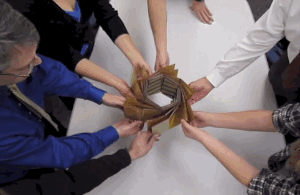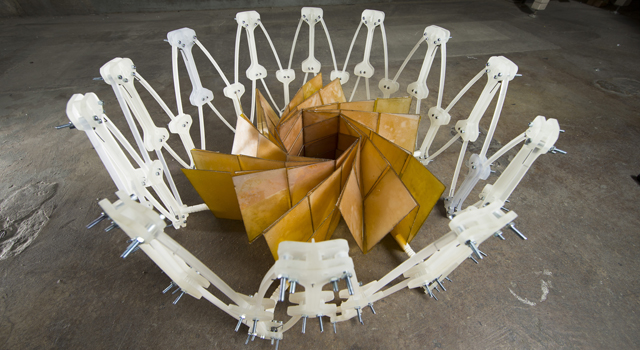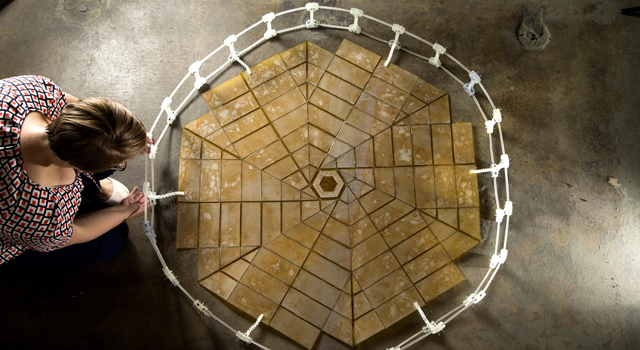NASA introduced a prototype origami system for spacecraft photocells

Despite the fact that the efficiency of solar cells is constantly growing, due to the emergence of new technologies and developments, a sufficiently large area of solar cells is required to provide spacecraft with energy. It is clear that the ordinary "umbrella" of solar cells in the unfolded state cannot be sent to space. Therefore, it is necessary to invent new methods and methods to reduce the area of folded batteries and a reliable system for their deployment in outer space.
About one such system on Habré has already been written : a team of engineers from BYU (Brigham Young University), with the involvement of physicist Robert Leng, a specialist in " scientific origami ", began work on finding effective ways to fold / deploy solar panels.
At the end of last year, Robert Leng and space device developers began work on the project of a solar battery, a thickness of 1 centimeter, the diameter of the entire system when folded is only 2.7 meters. When unfolded, the diameter of the system increases to 25 meters, which allows the solar battery to produce about 250 kW of energy. This is enough to supply the three ISS.
Now , NASA experts who are interested in the project have also joined this team . The other day, the developers demonstrated a prototype system, on a scale of 1/20 compared to the estimated size of the planned system.
According to scientists, such origami systems can be used not only for large spacecraft, but also for portable satellites such as CubeSats. In addition, the principle of origami can be used to create systems of folding antennas. All this can radically change the design of some basic elements of space devices.


It takes some time to implement the project, but, as we see, a prototype already exists, so such a system, one must think, is quite real.
Via nasa
